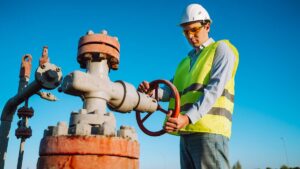New renewable energy report doesn’t hold back about how great 2018 was – it was pretty great

It's a winner Pic: Getty Images
2018 was a blockbuster year for renewable energy as investment doubled and generating capacity hit 21 per cent of the country’s power supply.
Yet fears remain that without new policy to replace the Renewable Energy Target (RET), which expires next year, this momentum could be lost.
However, the Clean Energy Council says there is little chance 2019 will be a slow year, after running the numbers in its Clean Energy Australia report 2019.
In the report the organisation outlined some pretty big numbers:
- Investment increased from $10bn in 2017 to $24.5bn in 2018.
- 14.5 GW of new generation — 87 projects — was financed or under construction by the end of the year.
- Renewable energy makes up 21 per cent of the country’s total capacity.
- 68 per cent of generation is hydro and wind; rooftop solar makes up about 20 per cent and large scale solar just 4 per cent.
- The state with the most renewable projects under construction is Queensland with 4941 megawatts (MW) and investment of $10bn. They’re followed by NSW — 3800 MW costing $4.8bn — and then Victoria with 3140MW and $5.1bn.
Some small cap energy execs were concerned about a decline in investment from 2020 even before the government dropped its National Energy Guarantee (NEG) policy, while others were certain that would be the case after it was dumped.
But Clean Energy Council energy transformation director Lillian Patterson says the data shows there are other drivers pushing the sector, even in a policy vacuum.
Two she named were rapidly falling costs and corporate power purchase agreements (PPAs) — 20 in 2018 for a total of 931 MW.
She told Stockhead they’re not seeing a fall in investment proposals after 2020 either.
“While there’s some uncertainty out there, I don’t think we’ll see the momentum drop off anytime soon.”
Looking back at the problems or forward at the solutions?
But this influx of intermittent power has caused some problems.
Today the Australian Energy Market Commission (AEMC) said the market operator AEMO had to step in 101 times during 2017-18 to turn gas generators on, compared with eight times the year before.
One hundred of those times was in South Australia, which has the highest level of renewable energy at 53 per cent, where AEMO is directing intervening about 30 per cent of the time.
“In Victoria, there were occasions when AEMO had to manually switch off transmission lines to maintain voltages at stable levels across the network to deliver secure supply,” the AEMC said.
“System strength deterioration is also evident in north Queensland, south-west NSW, north-west Victoria as well as South Australia.”
- Subscribe to our daily newsletter
- Join our small cap Facebook group
- Follow us on Facebook or Twitter
This effectively comes down to problems with a grid that isn’t set up to take the particular kind of energy produced by renewables, in areas that haven’t historically had to deal with a lot of generation capacity anyway.
Patterson says a conversation is already underway about these issues (as Stockhead detailed here), however, and not all interventions were due to renewables: some were because of coal power plants not being available.
“What we’ve seen from AEMO, who’s responsible for the marginal loss factor numbers [a key point of contention in the market] and as well as has a role in grid connections… We’ve seen a real willingness and openness to address these concerns that people have.”
States are stepping in
Labor unleashed its climate change and energy plan last week, which includes a big target of 50 per cent of electricity to come from renewables by 2030.
The Liberals are sticking with already-promised plans to back Snowy Hydro 2 and the Tassie hydro ‘Battery of the Nation’ scheme and Marinus Link interconnector to the mainland, along with a couple of other smaller ventures noted in the 2019 Budget.
The Clean Energy Australia Report says the states are picking up the slack in the absence of federal policy, adopting their own energy targets and support policies.
UNLOCK INSIGHTS
Discover the untold stories of emerging ASX stocks.
Daily news and expert analysis, it's free to subscribe.
By proceeding, you confirm you understand that we handle personal information in accordance with our Privacy Policy.








